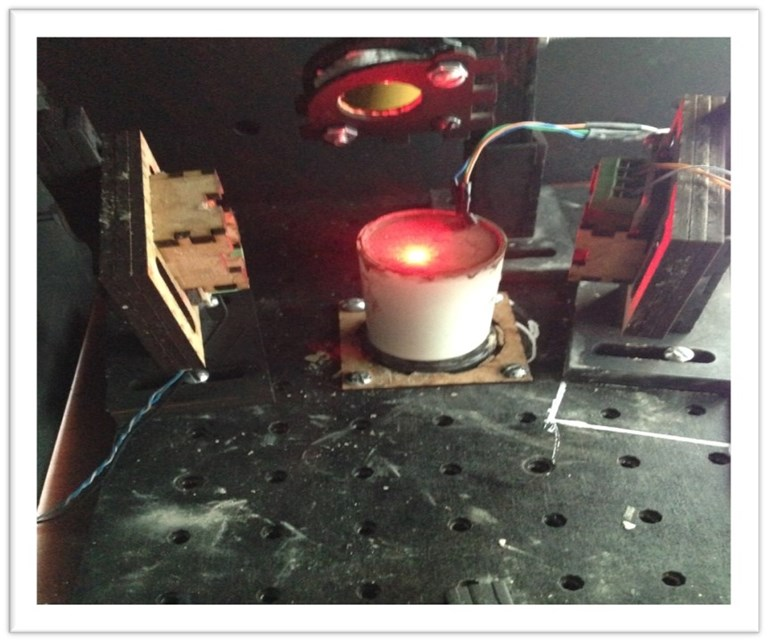Jan 17 2020
A noninvasive and nondestructive optical method has been recently developed by researchers that can calculate the setting times for different types of cement paste. Cement paste is used for binding both old and new concrete surfaces.
 For real-time characterization of cement setting, the researchers combined diffuse reflection measurements with an optical model. Image Credit: José Ortiz-Lozano.
For real-time characterization of cement setting, the researchers combined diffuse reflection measurements with an optical model. Image Credit: José Ortiz-Lozano.
The latest optical technique can help in developing optimized cement types that have a low environmental impact.
Our noninvasive optical method characterizes and determines the setting time of cement, which is a very important parameter for the construction industry. It can also precisely assess the cement hydration process in real-time. This information is crucial for both the study of physical chemistry and the quantitative characterization of the nanomechanical properties of cement-based materials.
José Ortiz-Lozano, Researcher, Universidad Autónoma de Aguascalientes
Ortiz-Lozano is also working at Tecnológico Nacional de México and Centro de Investigaciones en Óptica based in Mexico.
The researchers have published the results in the Applied Optics journal of The Optical Society (OSA), describing how the new optical technique integrates an optical model with laser-based technology to measure the dynamic behavior of the cement paste.
The scientists also demonstrated that their technique can precisely determine the initial setting time—that is, the time available for combining the cement and then placing it in position—as well as the ultimate setting time—the time when the cement reaches its complete strength.
Our group is trying to enhance the performance of cement-based materials, such as cement pastes, mortars, and concrete. New material characterization methods, such as the one we report here, can be used to improve the behavior and performance of cement by optimizing its constituents.
José Ortiz-Lozano, Researcher, Universidad Autónoma de Aguascalientes
Ortiz-Lozano continued, “This could lead to new types of cement that use less water and raw materials like limestone and clay, which would make them more environmentally friendly.”
Studying Cement with Light
While many different types of methods are available for investigating the dynamics of cement setting, they have many disadvantages, for example, they are invasive, destructive, or affected by human factors.
By contrast, the latest optical technique utilizes the optical characteristics of cement paste to directly determine both the initial and final setting time of cement by quantifying the diffuse light reflecting off the cement.
When the cement sets, the reflection of the diffuse light changes as it reacts with water and the spaces present between the particles of cement also vary. The diffuse reflection characteristics are also influenced by the quantity of water present, as well as the protective surface layer present at each setting stage.
The scientists later integrated the Kubelka-Munk model with the diffuse reflection measurements; the Kubelka-Munk model is used to elucidate the diffuse reflection of dense samples.
“This new optical method was developed using tools, component, and materials common among the optical industry,” added Ortiz-Lozano. “It would be, therefore, quite simple and economic to implement in cement quality control laboratories. It can be applied to any type of cement once the appropriate calibration is performed with the Kubelka-Munk model.”
When the scientists applied the latest optical method to six samples of cement, they discovered that the outcomes for all the six samples were repeatable and correlated well with today’s commonly used measurement methods.
This laser-based technique gives continuous and accurate assessment of cement hydration process with high repeatability and reproducibility, showing its potential for studying the physical chemistry properties of cement.
José Ortiz-Lozano, Researcher, Universidad Autónoma de Aguascalientes
The scientists have planned to obtain more amounts of data using additional types of concretes, mortars, cement, and also adding more water to cement ratios and cement pastes containing admixtures of chemicals and/or minerals. The team is also intending to carry out the work needed to normalize the new optical technique as a standard.